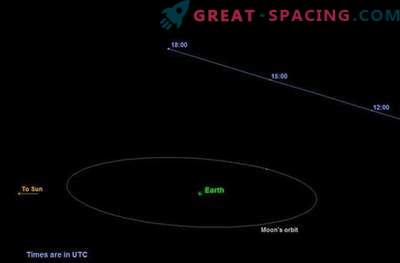
Last month, newspapers, community channels, radio programs, and social media were full of reports of a discovered asteroid that would rush close to Earth.
An asteroid, or as it later turned out the extinct cometary nucleus, became known as the “Ghost” (the official name 2015 TB145). But what attracted the attention of journalists more was the fact that there was no warning about a flying cobblestone flying at a speed of 36,000 meters per second.
There is one simple answer to this: asteroids and comets are very difficult to detect. In addition, asteroids are usually small and dark. In the case of the “Ghost” asteroid, it was no more than 600 meters in diameter and had an albedo of 0.06. By the way, the albedo of the blackboard has the same meaning. Now imagine that a school board, which is 600 meters wide, moves in space at a speed of 36,000 meters per second — of course, it is difficult to detect.
Fortunately, there are organizations and armies of amateur astronomers around the world looking for these unexpected visitors.
There are at least seven automated observatories that scan the night sky for such objects. The Lincoln Near-Earth Asteroid Research program, the LINEAR Laboratory of Near-Earth Asteroids and the Catalina Sky Survey, are the most famous observatories that discovered thousands of near-Earth objects and a number of comets. The restarted NASA Neowise space telescope also peers into space in infrared light. The method, which is used by all automated systems, is to constantly probe the space and analyze the star field in search of objects that should not be there. Then, when the object is detected, it is necessary to calculate its orbit.
To understand this, imagine that you need to take a picture of a tennis ball that flies through the air. A single photo can give an idea of the position of an object, but it will definitely not tell you anything about its speed and direction. You need to take more photos within a certain time. The same goes for the asteroid photo. You need to open it first, and then calculate its orbit. After the orbital characteristics are known, it will be possible to predict its orbital path and begin calculating the risk of this object.
At present, 13280 near-earth objects have been discovered that pass in the orbital neighborhood of the Earth. All that remains for us to do is to keep our eyes open and carefully follow the starry sky.











































